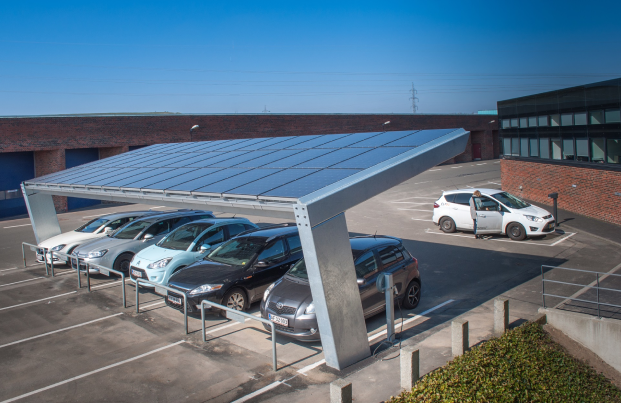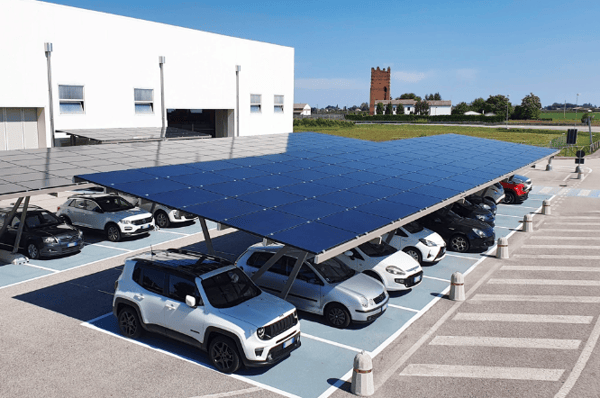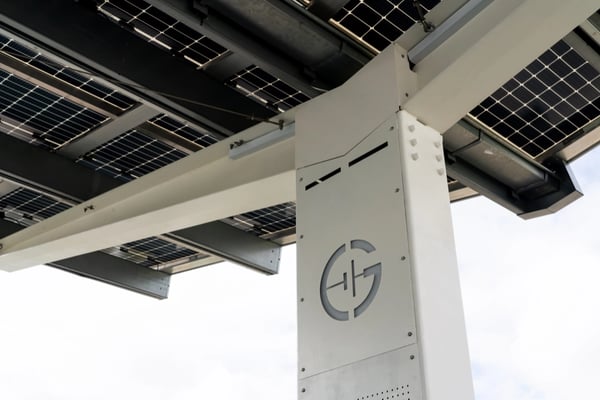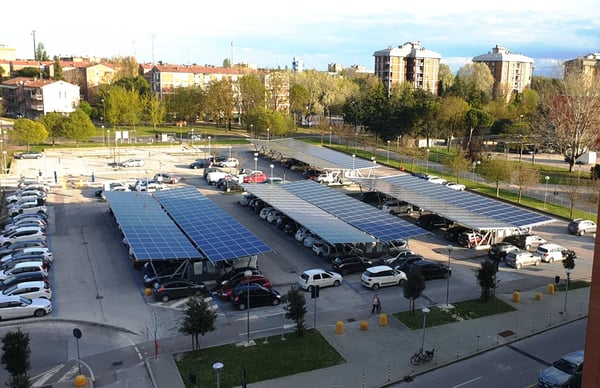Solar carports are gaining popularity as a way to generate renewable energy from carparks, an previously underutilised resource. With the potential to significantly reduce or even eliminate energy costs, getting the size of your solar carport right can greatly impact the return on investment you receive. Learn how to determine the best size for your installation.
Determining the Optimal Size for Solar Carports
When it comes to solar carport installations, determining the optimal size is crucial. The size of your carport will directly affect the return on investment (ROI) you can expect to receive. In general, the bigger the carport, the greater the ROI, as a larger surface area of solar panels will generate more renewable electricity. It is recommended to aim for a carport that covers 20 or more spaces, as this will provide the best ROI and lowest payback times.
However, even carports smaller than 20 spaces can still generate useful amounts of renewable energy. While the payback times may be slightly longer, you can still benefit from reducing energy costs and contributing to a more sustainable future.
When deciding on the size of your carport, it's important to consider how you will be using the electricity it generates. If you are solely interested in reducing energy costs, a smaller carport may be sufficient. However, if you also plan to provide electric vehicle (EV) charging, it's important to calculate the number of solar panels you'll need, and ensure that your carport covers the appropriate number of spaces.
Factors to Consider in Solar Carport Size Calculation
Several factors should be taken into consideration when calculating the size of your solar carport. These factors include:
- Available space: Assess the available space on your property to determine the maximum size your carport can be. Consider any potential limitations or obstacles that may affect the installation.
- Energy requirements: Evaluate your energy requirements based on the intended use of the electricity generated. Determine if you only want to reduce energy costs or if you also plan to provide EV charging.
- Budget: Consider your budget for the solar carport installation. A larger carport with more solar panels may require a higher upfront investment, but it can also lead to greater long-term savings.
- Future expansion: Think about any potential future expansion plans. If you anticipate an increase in energy demand, it may be wise to install a slightly larger carport to accommodate future growth.
By carefully considering these factors, you can ensure that your solar carport is sized optimally for your specific needs.
Managing Oversupply of Electricity
In some cases, you may find that your solar carport generates more electricity than you actually need. When faced with oversupply, there are several strategies you can employ to manage the excess energy.
One option is to install batteries that can store the excess energy for use during nighttime or periods of high demand. This allows you to make the most of the electricity generated and reduce reliance on the grid.
Another solution is to take advantage of the Smart Export Guarantee (SEG). With this program, you can export the excess energy back to the grid and earn money for each kilowatt-hour (kWh) exported. This can help offset the initial investment of your solar carport installation and provide an additional source of income. Bear in mind though that SEG tariffs are decided by variable, and generally less than a standard tariff (the best SEG tariffs per kilowatt hour currently (April 2024) are around 15p per kilowatt hour; compared to around 22p per kilowatt hour or more, depending on the supplier and usage).
Alternatively, you can install EV charging points and offer the electricity for free or at a price to staff or customers. This not only helps utilize the excess energy but also promotes the adoption of electric vehicles and supports sustainable transportation. Free EV charging is a valuable benefit for employees with electric vehicles, while offering charging to customers not only generates additional income but encourages them to stay longer, and therefore spend more.
By implementing these strategies, you can effectively manage the oversupply of electricity and ensure that your solar carport operates efficiently and effectively.
Customizing Your Solar Carport for Maximum Efficiency
To achieve maximum efficiency with your solar carport, customization is key. By tailoring the design and configuration to your specific needs, you can optimize the performance and output of your system.
We can help you optimise factors such as the orientation and tilt of the solar panels to maximize sunlight exposure and energy generation as part of our design service. It's also possible to integrate smart technologies that enable real-time monitoring of the energy production and consumption on your site.
By customizing your solar carport for maximum efficiency, you can ensure that you are getting the most out of your investment and making a positive impact on the environment.
Maximizing ROI with the Right Carport Size
Choosing the right carport size is essential for maximizing your ROI. As mentioned earlier, a carport covering 20 spaces or more generally provides the best ROI and lowest payback times. This larger carport size allows for a greater surface area of solar panels, resulting in increased renewable electricity generation.
Ultimately, finding the optimal carport size is a balancing act between your energy requirements, available space, and budget. By carefully considering these factors and working with solar carport experts, you can design a system that maximizes your ROI and meets your specific needs.
Contact us today to start increasing the ROI your site generates. From detailed design and consultation through to groundworks, carport installation and electrical work, we look after it all, making the process easy and giving you peace of mind.





